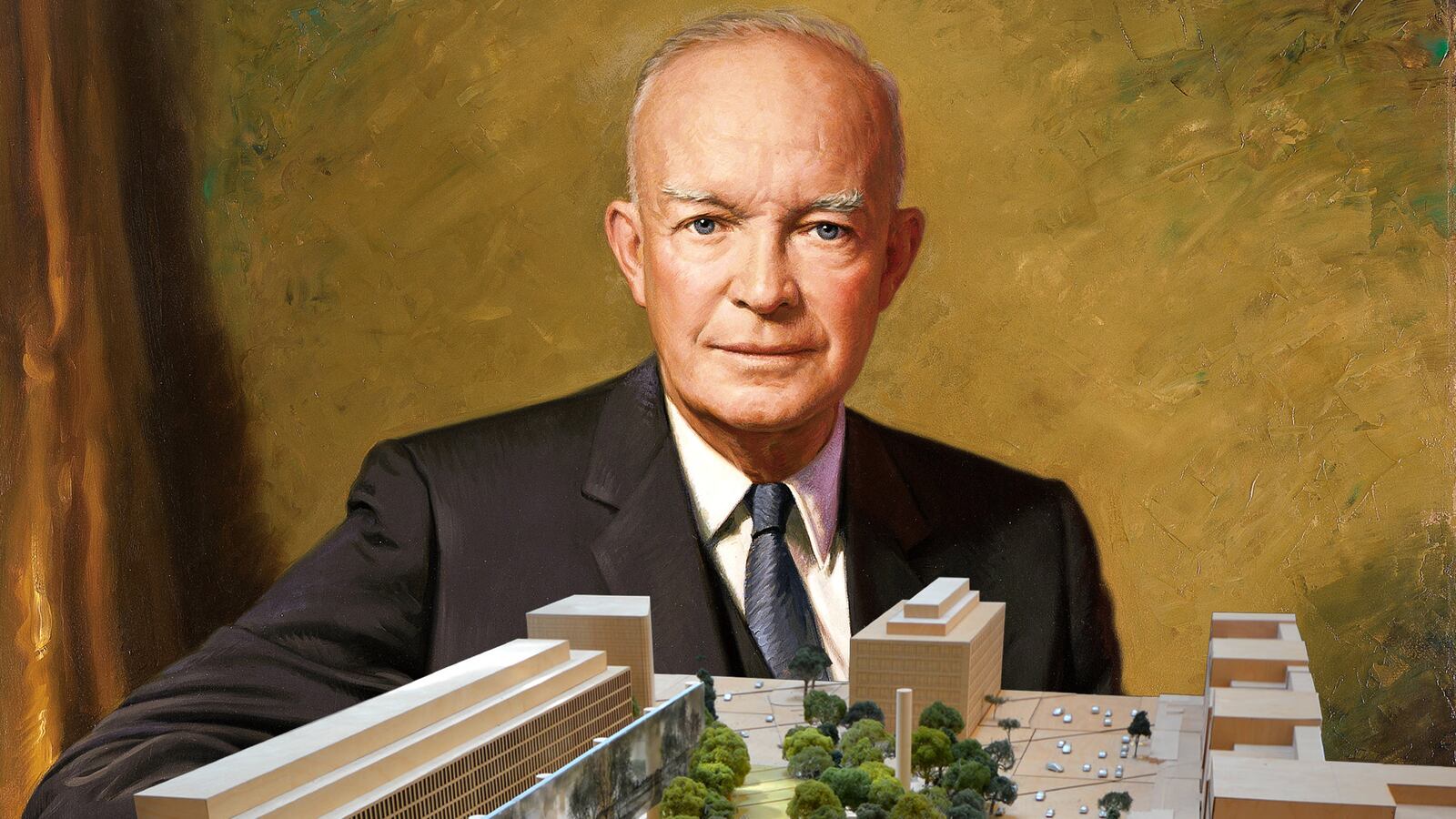If Bob Dole, the former Kansas senator and 1996 Republican nominee for president, has anything to say about it, 2016 will be the year in which the funding issues for the Dwight D. Eisenhower Memorial in Washington are settled. As the new finance chairman of the Eisenhower Memorial Commission, Dole, who led the effort that raised more than $170 million in private donations for the National World War II Memorial, brings the right experience to the job.
Dole’s worries about the delays surrounding the Eisenhower Memorial are understandable. At the age of 92, he knows that time is not on the side of World War II vets like himself who want the Eisenhower Memorial built while they are around to see it. Only 855,000 of the more than 16 million men and women who served in World War II are still living. Nearly 180,000 World War II vets die each year, and with the Eisenhower Memorial not having anywhere near the $140 million to $150 million it is estimated to cost, more delays loom.
Delays on building memorials, especially presidential memorials, are nothing new. They rarely get completed in timely fashion. The Washington Monument was dedicated in 1885, the Lincoln Memorial in 1922, the Jefferson Memorial in 1943, and nothing has changed for our 20th-century presidents. The Franklin Roosevelt Memorial, which opened to the public in 1997, took 42 years to complete after it won congressional approval.
In the case of the Eisenhower Memorial, the current delays are rooted in an unexpected source—the Eisenhower grandchildren. For years they have been asking for a more meaningful memorial than the extravagant, almost cinematic presentation of their grandfather’s life that Frank Gehry has designed, and out of respect for their wishes, Congress has held back funding, even though the memorial has received the governmental approval it needs from the Commission of Fine Arts and the National Capital Planning Commission.
“It simply defies logic and decency to design and build a memorial to Dwight Eisenhower without obtaining the approval of the Eisenhower family,” Republican Congressman Ken Calvert of California, chairman of the appropriations subcommittee with jurisdiction over the memorial,” told The Washington Post last year.
By law, construction cannot begin on the memorial until full funding has been achieved, and what Bob Dole is hoping to do with his private funding efforts is get around Congress’s power to control when groundbreaking starts on the Eisenhower Memorial.

Congress authorized the Eisenhower Memorial in 1999. Six years later, in 2005, after looking at 26 options, the Eisenhower Memorial Commission chose a four-acre site between the National Air and Space Museum and the Department of Education, both of which Eisenhower helped create. The biggest obstacle, though, was yet to come. It was the winning design of famed architect Frank Gehry, best known for his sculpture-like Guggenheim Museum in Bilbao, Spain, and Foundation Luis Vuitton in Paris.
Gehry’s 2010 design soon drew criticism for its diffuseness. It contained 10 pillars, each eight stories high, intended as links to the National Mall’s classically inspired architecture but also as supports for three transparent, stainless-steel, mesh tapestries portraying the Kansas of Ike’s childhood. Then at the center of the memorial was a small sculpture of a young Ike sitting on a wall and surveying his future, plus two bas-relief sculptures of Ike in scenes showing him at the height of his powers as a World War II general and president.
The initial, negative reaction of the Eisenhower family to Gehry’s presentation came in 2011. Eisenhower’s granddaughters, Anne and Susan, saw Gehry’s work as overblown and too focused on their grandfather’s Kansas past, and their brother David, who had sat on the Eisenhower Memorial Commission, resigned from it, giving his support to his sisters’ request that the design be rethought.
Gehry went back to work on his memorial, but three years later, the Eisenhower Memorial seemed almost as eclectic as it had first been. The two smaller tapestries were now gone, and there were fewer pillars, but a still young Ike surveying his future remained along with the two bas-relief sculptures of him as general and president and the large mesh tapestry of the Kansas he grew up in.
Anne and Susan Eisenhower were unconvinced that Gehry had listened seriously enough to their complaints, and in a Sept. 15, 2014, letter to the Eisenhower Memorial Commission, the sisters spelled out the alternatives they had in mind for Gehry’s memorial. The first alternative involved putting forward a “simpler design” that “would eliminate the towering scrim and all the pillars.” The second alternative was a “complete redesign” competition open to all, including Frank Gehry.
“This is not being built for the grandchildren,” Bob Dole observed of the Eisenhowers’ criticisms, and beginning in 2015, the Eisenhower family has toned down its comments. “We have decided not to make any comments at this time except to say how deeply appreciative we are of the many distinguished Americans, including all living former presidents, who are supporting the building of an Eisenhower Memorial in Washington, D.C.,” the family declared in the fall of 2015 in a statement that made a point of stopping short of endorsing Gehry’s redesign.

How would Eisenhower, so brilliant at dealing with the Allies in World War II and Democrats during his years in the White House, have responded to the battle over his own memorial? Certainly, he would be sympathetic to the idea of completing it as soon as possible for the sake of the surviving World War II vets. But he would also shudder at the idea of a biopic of a memorial.
“Humility must always be the portion of any man who receives acclaim earned in the blood of his followers and the sacrifices of his friends … his honors cannot hide in his memories the crosses marking the resting places of the dead,” Ike observed in an address he delivered at Guildhall in London in 1945.
Ike’s Guildhall speech reflected who he was, as Susan Eisenhower has stressed. A year earlier he had done his best to plan for D-Day, but in his pocket he carried with him an aide-memoire of what he would tell the press if the invasion failed: “My decision to attack at this time and place was based on the best information possible. The troops, the air, and the Navy did all that bravery and devotion to duty could do. If any blame or fault attaches to the attempt it is mine alone.”
It’s impossible, as Michael Korda, Ike’s thoughtful biographer, has pointed out, to imagine such publicity-seeking World War II generals as George Patton or Douglas MacArthur making such a statement, and in that difference we have the core of Ike’s character—the quality a memorial to him needs to capture.
Creating such a memorial is a tall order, but it is not beyond architectural reach. The best tributes to our former presidents, whether embodied in the eternal flame at the gravesite of President John Kennedy at Arlington National Cemetery or in the Greek temple that constitutes the Lincoln Memorial, come in single images that symbolize their lives.
That’s the kind of focused tribute Ike’s grandchildren are asking for their grandfather and, by extension, for vets like Bob Dole, who have every reason to see the Eisenhower Memorial as a reflection of their World War II service.
Nicolaus Mills is professor of American studies at Sarah Lawrence College and author of Their Last Battle: The Fight for the National World War II Memorial.






